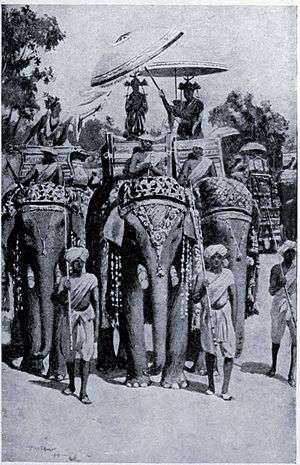643
Year 643 (DCXLIII) was a common year starting on Wednesday (link will display the full calendar) of the Julian calendar. The denomination 643 for this year has been used since the early medieval period, when the Anno Domini calendar era became the prevalent method in Europe for naming years.
| Millennium: | 1st millennium |
|---|---|
| Centuries: | |
| Decades: | |
| Years: |
|
| 643 by topic |
|---|
| Leaders |
| Categories |
|
| Gregorian calendar | 643 DCXLIII |
| Ab urbe condita | 1396 |
| Armenian calendar | 92 ԹՎ ՂԲ |
| Assyrian calendar | 5393 |
| Balinese saka calendar | 564–565 |
| Bengali calendar | 50 |
| Berber calendar | 1593 |
| Buddhist calendar | 1187 |
| Burmese calendar | 5 |
| Byzantine calendar | 6151–6152 |
| Chinese calendar | 壬寅年 (Water Tiger) 3339 or 3279 — to — 癸卯年 (Water Rabbit) 3340 or 3280 |
| Coptic calendar | 359–360 |
| Discordian calendar | 1809 |
| Ethiopian calendar | 635–636 |
| Hebrew calendar | 4403–4404 |
| Hindu calendars | |
| - Vikram Samvat | 699–700 |
| - Shaka Samvat | 564–565 |
| - Kali Yuga | 3743–3744 |
| Holocene calendar | 10643 |
| Iranian calendar | 21–22 |
| Islamic calendar | 22–23 |
| Japanese calendar | N/A |
| Javanese calendar | 533–535 |
| Julian calendar | 643 DCXLIII |
| Korean calendar | 2976 |
| Minguo calendar | 1269 before ROC 民前1269年 |
| Nanakshahi calendar | −825 |
| Seleucid era | 954/955 AG |
| Thai solar calendar | 1185–1186 |
| Tibetan calendar | 阳水虎年 (male Water-Tiger) 769 or 388 or −384 — to — 阴水兔年 (female Water-Rabbit) 770 or 389 or −383 |
Events
By place
Byzantine Empire
- Emperor Constans II recognises Theodore Rshtuni as ruler of Armenia, after his successful campaign against the Muslims. He names him commander (nakharar) of the Armenian army.
- Maurikios names himself dux of Rome, and revolts against exarch Isaac (Exarchate of Ravenna). He declares Rome's independence from the Exarchate and from the Byzantine Empire.
Europe
- King Rothari of the Lombards issues the Edictum Rothari, which is the first codification of Lombard law (written in Latin). The edict guarantees rights only for Lombard subjects.
- Duke Leuthari II has Otto, mayor of the palace of Austrasia, murdered. He is succeeded by Grimoald the Elder, the eldest son of Pepin of Landen.
Britain
- King Cynegils of Wessex dies after a 32-year reign, and is succeeded by his son Cenwalh (who is still pagan); he marries the sister of King Penda of Mercia (approximate date).
Persia
- Peroz III, son of Yazdegerd III, the last Sassanid king of Persia, flees to territory under the control of the Tang Dynasty in China (approximate date).
Africa
- Arab–Byzantine War: Arab armies continue their military expansion into North Africa and lay siege to Tripoli. The city is captured after one month.
- 'Amr ibn al-'As sends a detachment to Sabratha (modern Libya). The city puts up feeble resistance, but soon surrenders and agrees to pay Jizya.
Asia
- Chinese prefectural government officials travel to the capital of Chang'an, to give the annual report of the affairs in their districts. Emperor Taizong discovers that many have no proper quarters to rest in, and are renting rooms with merchants. Therefore, Taizong orders the government agencies in charge of municipal construction to build every visiting official his own private mansion in the capital.
- A Chinese embassy is sent to the North Indian Empire. They are invited by Emperor Harsha, who holds a Buddhist convocation at the capital Kannauj, which is attended by 20 kings and thousands of pilgrims.[1]
- Taizong commissions artist Yan Liben to paint in the Lingyan Pavilion the life-size portraits of 24 government officials, to commemorate their service and contributions to the founding of the Tang Dynasty.
By topic
Religion
- Æbbe establishes a monastery at Ebchester, known as Kirk Hill at St Abb's Head near Coldingham (Scotland).
Deaths
- April 29 – Hou Junji, chancellor of the Tang Dynasty
- September 19 – Goeric, bishop of Metz
- Cynegils, king of Wessex (approximate date)
- Maurikios Chartoularios, Byzantine rebel leader
- Otto, mayor of the palace (Austrasia)
- Wei Zheng, chancellor of the Tang Dynasty (b. 580)
gollark: To maintain long-term productivity you *need* to get a reasonable amount of sleep.
gollark: No, I couldn't, because if I did not sleep I would... probably end up crashing my brain, effectively?
gollark: I'd prefer not to, but yes.
gollark: Yes.
gollark: If you have a hell in a religion, that automatically makes your god basically evil.
References
- Watters, Thomas. "On Yuan Chwang's Travels in India". Two volumes. 1904–1905, Royal Asiatic Society, London. One volume reprint: Munshiram Manoharlal, Delhi, 1973, pp. 343–344
This article is issued from Wikipedia. The text is licensed under Creative Commons - Attribution - Sharealike. Additional terms may apply for the media files.
